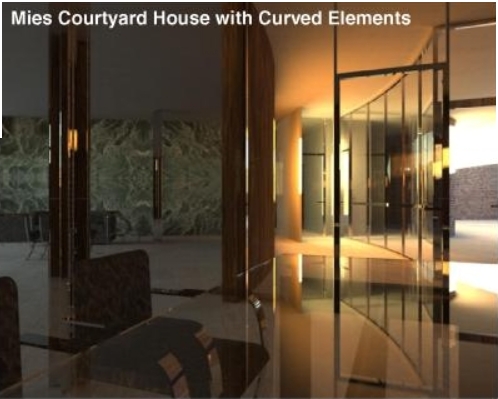Ray TracingEffects needed for Realism
|
 |
| The light of Mies van der Rohe / Modeling: Stephen Duck / Rendering: Henrik Wann Jensen |
Three ideas about light
-
Light rays travel in straight lines
-
Light rays do not interfere with each other if they cross
-
Light rays travel from the light sources to the eye, but the physics is invariant under path reversal (reciprocity).
Ray Tracing is a global illumination based rendering method. It traces rays of light from the eye back through the image plane into the scene. Then the rays are tested against all objects in the scene to determine if they intersect any objects. If the ray misses all objects, then that pixel is shaded the background color. Ray tracing handles shadows, multiple specular reflections, and texture mapping in a very easy straight-forward manner.
Note that ray tracing, like scan-line graphics, is a point sampling algorithm. We sample a continuous image in world coordinates by shooting one or more rays through each pixel. Like all point sampling algorithms, this leads to the potential problem of aliasing, which is manifested in computer graphics by jagged edges or other nasty visual artifacts.
In ray tracing, a ray of light is traced in a backwards direction. That is, we start from the eye or camera and trace the ray through a pixel in the image plane into the scene and determine what it hits. The pixel is then set to the color values returned by the ray.